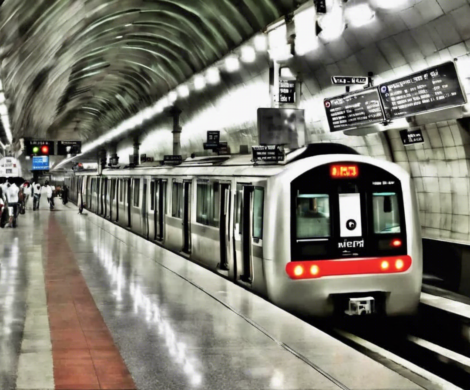Revitalizing Stockton: A Connected Community

Introduction
Stockton, California is a city with a rich history and a vibrant community spirit. However, like many urban areas, Stockton has faced its share of challenges in recent years. From economic downturns to high crime rates, the city has grappled with issues that have hindered its growth and potential. Despite these obstacles, there is a growing movement to revitalize Stockton and create a more connected and thriving community for its residents.
The Challenges Facing Stockton
Stockton has faced several challenges that have contributed to its struggles in recent years. High crime rates have been a significant issue, with the city experiencing above-average rates of violent crime compared to the national average. Poverty is also a pressing concern, with a large percentage of the population living below the poverty line. Unemployment has been another challenge, with job opportunities limited in certain sectors.
The Vision for a Connected Community
Despite these challenges, there is a renewed sense of optimism in Stockton as community leaders, residents, and businesses come together to create a more connected and vibrant city. The vision for a connected community in Stockton is multifaceted and encompasses various aspects of urban revitalization:
1. Economic Development
One key focus area for revitalizing Stockton is economic development. By attracting new businesses, supporting local entrepreneurs, and investing in job training programs, Stockton can create more opportunities for its residents and boost its economic growth.
2. Infrastructure Improvements
Infrastructure plays a crucial role in creating a connected community. Investments in transportation and public spaces can help improve access to resources and services for residents, as well as create a more visually appealing and functional city.
3. Community Engagement
Building a connected community also requires fostering a sense of community engagement and collaboration. By involving residents in decision-making processes, creating spaces for community gatherings, and supporting local initiatives, Stockton can strengthen the bonds between its residents and create a more cohesive community.
4. Public Safety
Addressing the issue of high crime rates is essential for revitalizing Stockton. Investments in public safety, community policing programs, and crime prevention initiatives can help make Stockton a safer place to live and work, thereby attracting more residents and businesses to the city.
5. Housing
Affordable housing is another critical component of a connected community. By investing in affordable housing options and revitalizing existing neighborhoods, Stockton can ensure that all residents have access to safe and affordable housing, regardless of their income level.
6. Education and Healthcare
Access to quality education and healthcare are vital for the well-being of Stockton residents. By investing in schools, healthcare facilities, and programs that support lifelong learning, Stockton can improve the quality of life for its residents and attract families to the city.
7. Sustainability
Creating a connected community also requires a focus on sustainability. Stockton can invest in green spaces, renewable energy, and environmental initiatives to create a more sustainable and environmentally friendly city for future generations.
Conclusion
In conclusion, revitalizing Stockton and creating a connected community is a multifaceted endeavor that requires collaboration, innovation, and investment. By addressing key challenges, such as economic development, infrastructure improvements, community engagement, public safety, housing, education, healthcare, and sustainability, Stockton can transform into a city that is more prosperous, inclusive, and resilient. Through the collective efforts of residents, businesses, and community leaders, Stockton can build a brighter future for all who call it home.
Frequently Asked Questions (FAQs)
1. What initiatives are in place to address high crime rates in Stockton?
Stockton has implemented various initiatives to address high crime rates, including community policing programs, crime prevention initiatives, and investments in public safety resources.
2. How can residents get involved in community engagement efforts in Stockton?
Residents can get involved in community engagement efforts in Stockton by participating in neighborhood meetings, joining local organizations, volunteering for community events, and reaching out to city officials with their ideas and concerns.
3. What opportunities are available for local entrepreneurs in Stockton?
Local entrepreneurs in Stockton can access resources such as business incubators, mentorship programs, and small business grants to help them start and grow their businesses.
4. How is Stockton addressing the issue of affordable housing in the city?
Stockton is addressing the issue of affordable housing through initiatives such as investing in affordable housing developments, implementing rent control policies, and providing housing subsidies for low-income residents.
5. What steps is Stockton taking to improve access to quality education for its residents?
Stockton is taking steps to improve access to quality education by investing in schools, expanding early childhood education programs, providing resources for underserved students, and partnering with local organizations to support student success.
6. How can businesses contribute to the revitalization of Stockton?
Businesses can contribute to the revitalization of Stockton by investing in the local economy, creating job opportunities for residents, supporting community initiatives, and participating in sustainability efforts that benefit the city and its residents.
7. What role can public spaces play in creating a more connected community in Stockton?
Public spaces play a vital role in creating a more connected community in Stockton by offering places for residents to gather, socialize, and engage in recreational activities, fostering a sense of community and belonging among diverse populations.
8. Are there programs in place to support healthcare access for underserved populations in Stockton?
Stockton has programs in place to support healthcare access for underserved populations, including community health clinics, mobile healthcare units, free healthcare screenings, and partnerships with local healthcare providers to offer discounted services to those in need.
9. How can residents contribute to sustainability efforts in Stockton?
Residents can contribute to sustainability efforts in Stockton by practicing energy conservation, reducing waste, supporting local farmers markets and sustainable businesses, participating in community clean-up events, and advocating for environmentally friendly policies at the local level.
10. What long-term benefits are expected from the revitalization of Stockton into a more connected community?
The revitalization of Stockton into a more connected community is expected to bring long-term benefits such as increased economic opportunities, improved quality of life for residents, stronger community bonds, enhanced public safety, more sustainable urban practices, and a more vibrant and inclusive city for all who live and work there.






